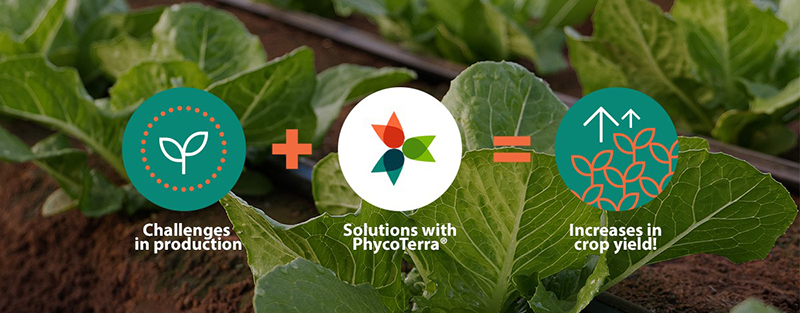Michigan’s a Hit with Tree Fruit Growers
Michigan State University (MSU) Extension’s Phil Schwallier made two promises to the nearly 250 people who attended the International Fruit Tree Association’s summer tour to his home state: you will visit only the best growers, and there will be no repetition. Schwallier, a past president of IFTA, who organized the tour with MSU colleague Amy Irish-Brown, made good on both.
-
-
1 of 11
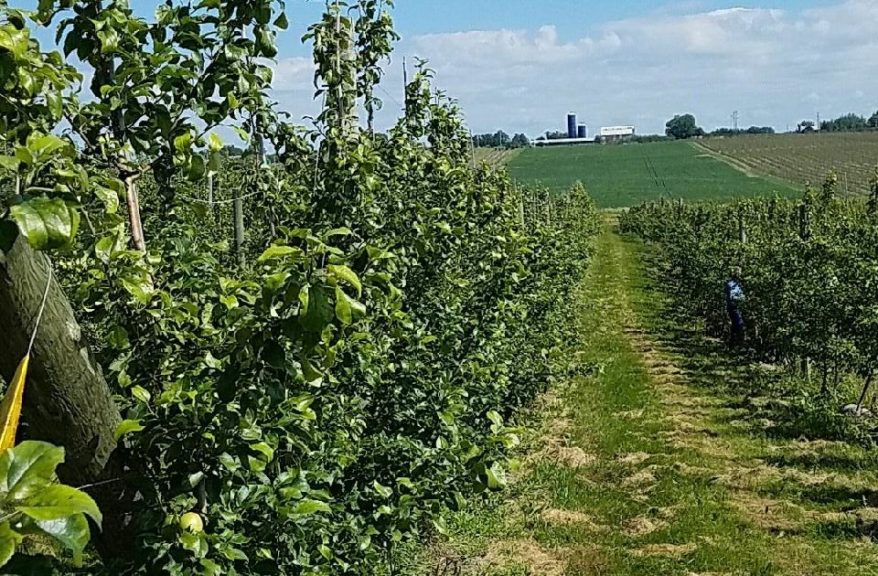
Bill Nyblad's New Leaf Orchards provided scenic backdrops. Nyblad may have been the first grower in the state to employ a multi-leader system. (Photo: David Eddy)
-
2 of 11
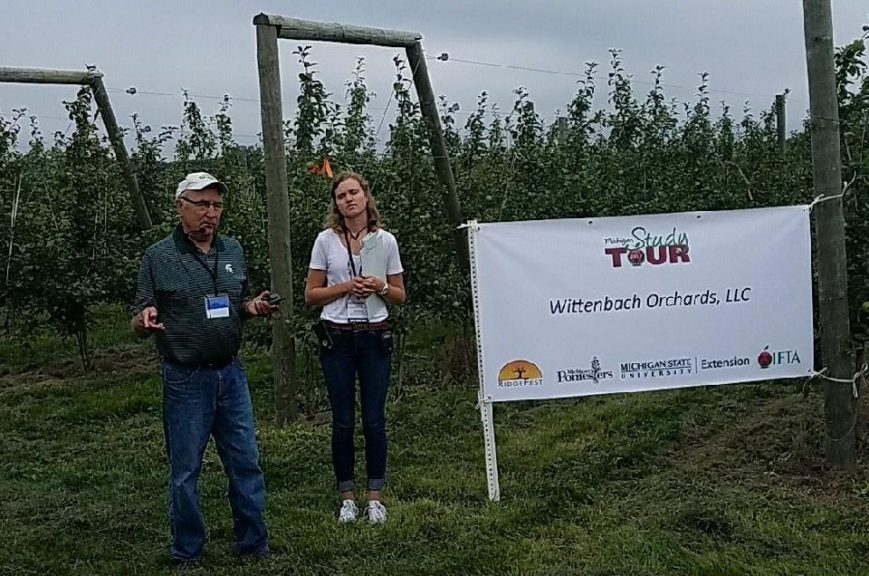
The first stop was Wittenbach Orchards, where Ed Wittenbach described the uneven crop caused by the freeze. His grandaughter, Elizabeth Wittenbach, is the real expert, as she's in charge of cropload management at the family farm. (Photo: David Eddy)
-
3 of 11
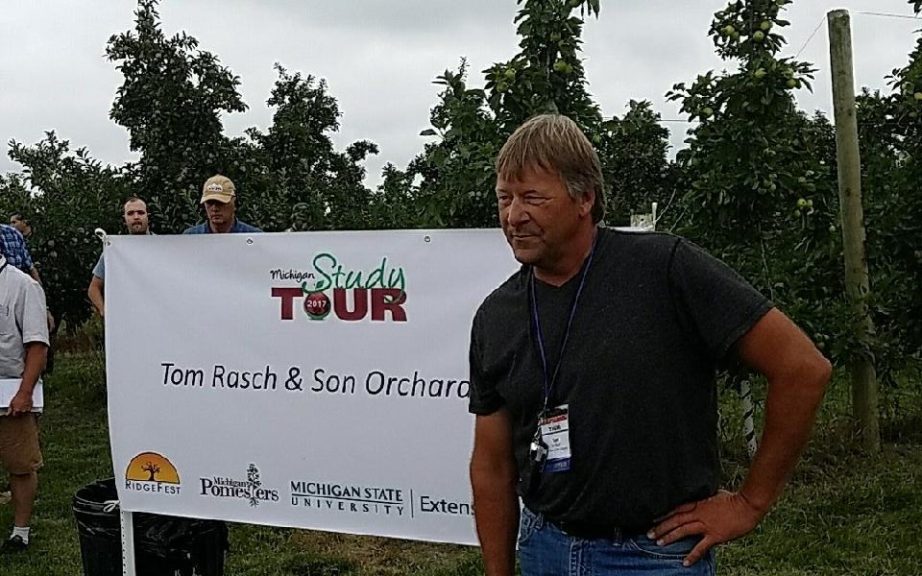
Tom Raasch said he lost 25% of his crop to the spring freeze, and it would have been at least double that without wind machines. Another 20% of these apples are designated for processing because they're not going to color up. (Photo: David Eddy)
-
4 of 11
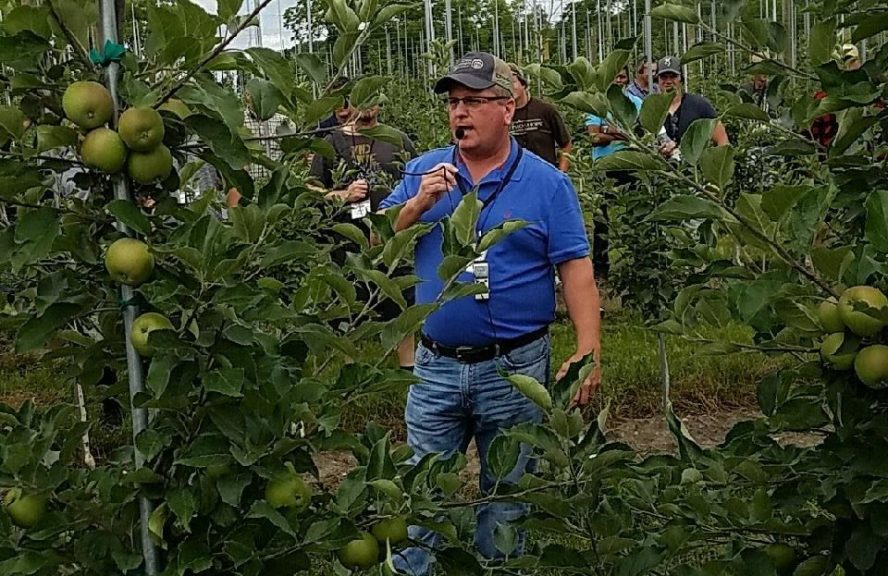
Chris Kropf shows off a planting of the Midwest Apple Improvement Association variety, 'EverCrisp' on Bud 9 rootstock. Don't start cropping until Year 4 to grow the canopy. Blind wood can be frustrating; you need to get after it with a PGR in year 1. (Photo: David Eddy)
-
5 of 11
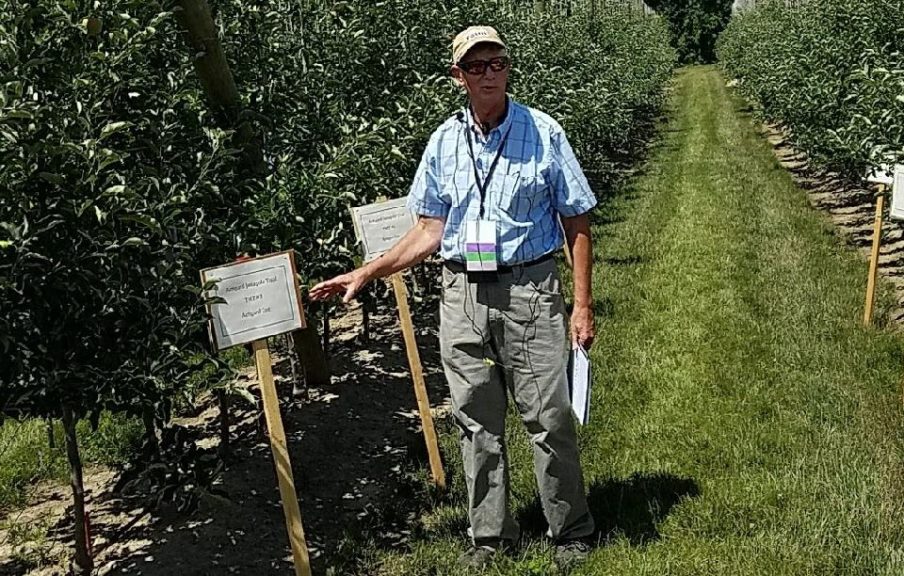
Phil Schwallier of Michigan State University Extension showed off his own family farm/market, where he said 'Honeycrisp' is most popular, but 'Jonagold' is a very strong No. 2. (Photo: David Eddy)
-
6 of 11
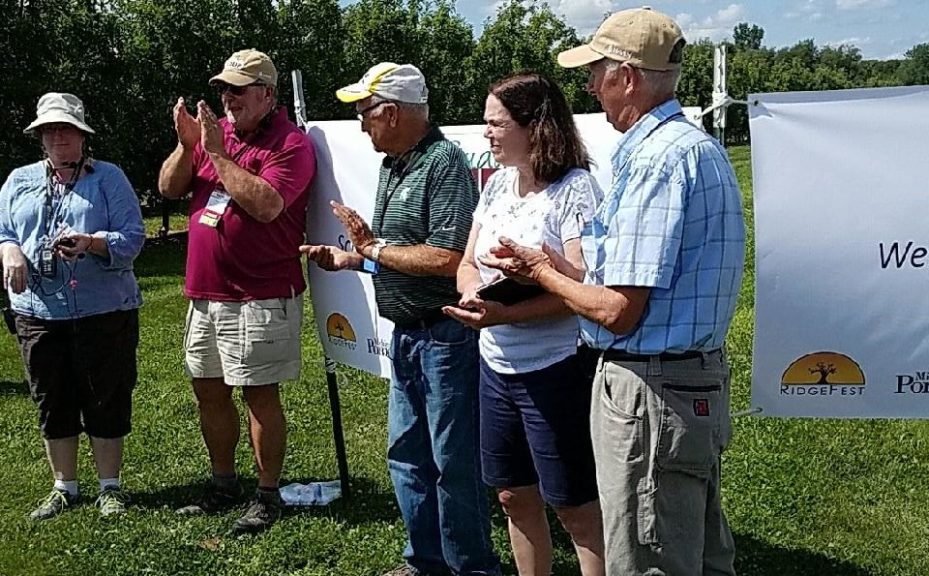
From left: Amy Irish-Brown, IFTA President Rod Farrow, Ed Wittenbach, and Judy and Phil Schwallier. Wittenbach said all the Michigan farms on the tour were a reflection on Phil Schwallier, who's been with Extension for 39 years. (Photo: David Eddy)
-
7 of 11
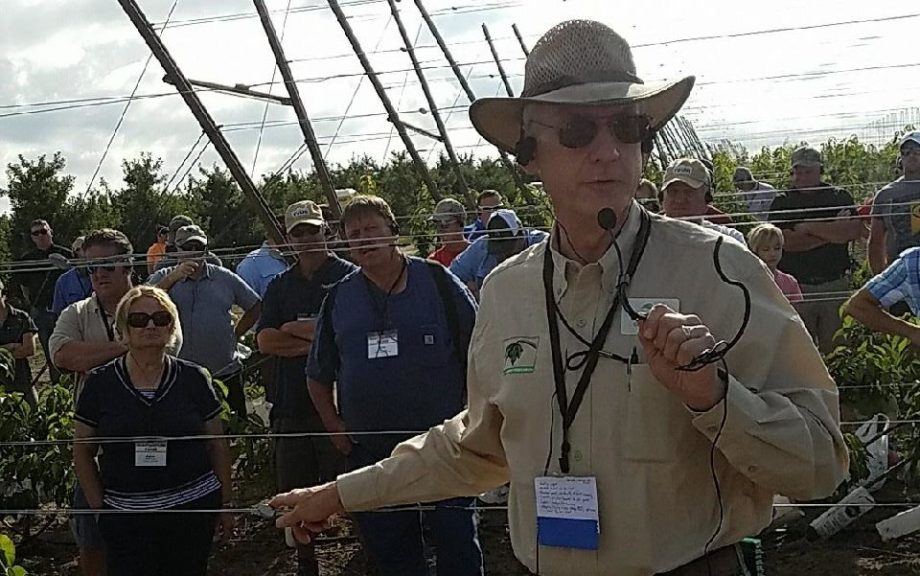
MSU's Greg Lang at Riveridge Land Co., a large apple and cherry grower and even bigger marketer. Lang said while apples are like marathon runners, cherries - like these on a 7-wire trellis - are like sprinters, and demand intensive care. (Photo: David Eddy)
-
8 of 11
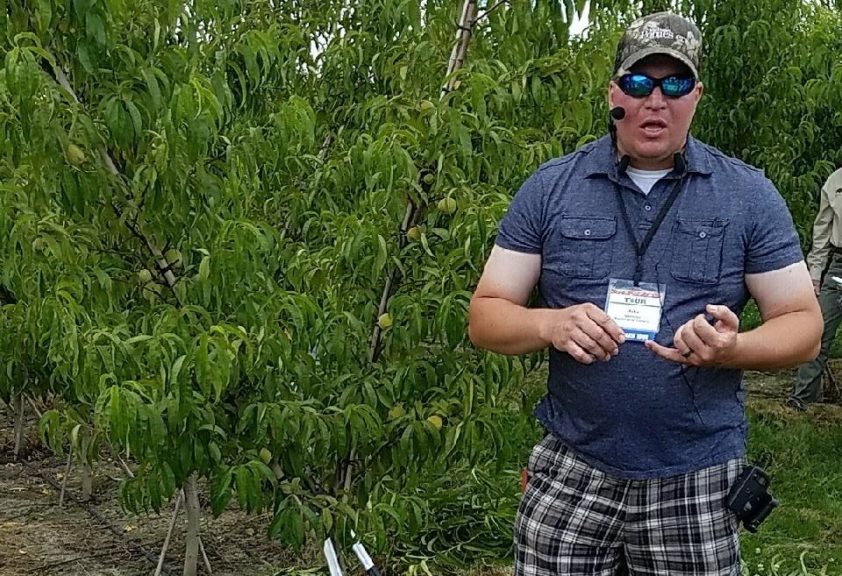
Jake Raasch, another of the many growers named "Raasch" on Michigan's famed "Ridge." He showed off his peaches on a V-trellis. Some say it produces small fruit, but Raasch said it depends on who's doing the thinning. (Photo: David Eddy)
-
9 of 11
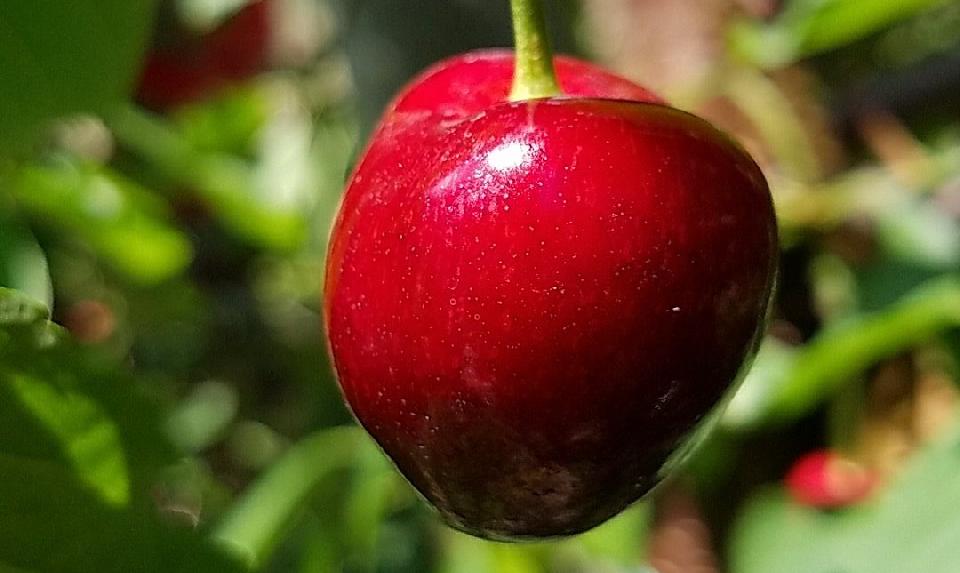
The final grower visit was to Phil Dietrich and Sons, where they were nice enough to save tour-goers some 'Regina' cherries - on Gisela 6 - to snack on. (Photo: David Eddy)
-
10 of 11
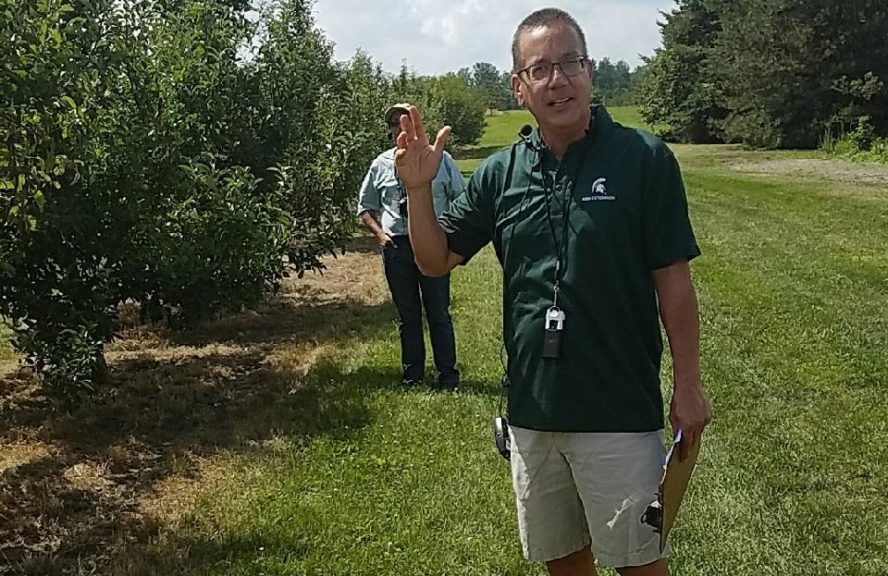
The tour's final day featured Michigan State University, including the farm lab of George Sundin. He said it was a weird year - warm up to bloom, but at bloom it got cold. When the trees were inoculated with fire blight it was only in the 40s. (Photo: David Eddy)
-
11 of 11
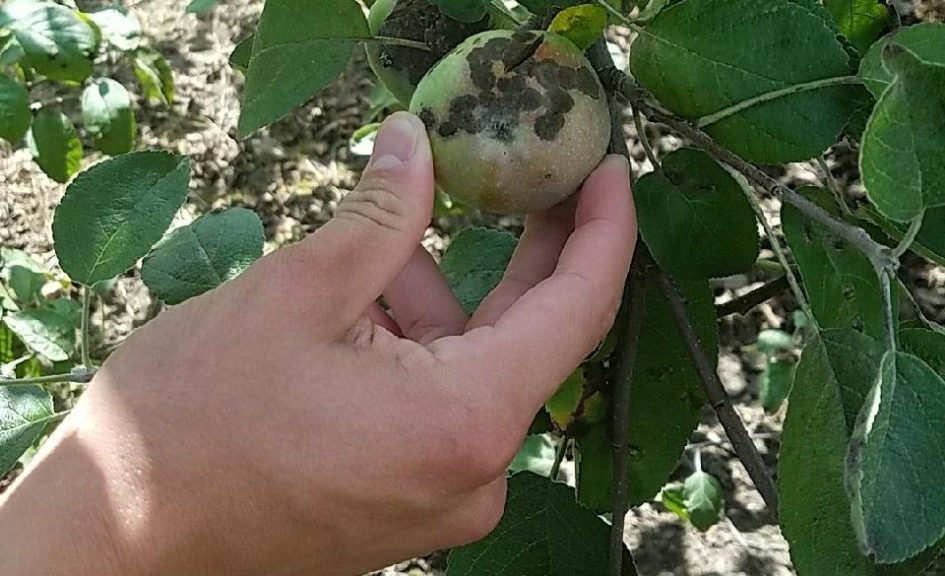
The main MSU campus tree fruit farm is next to the woods, so there's plenty of scab, which is what a plant pathologist like Sundin wants. (Photo: David Eddy)
View all
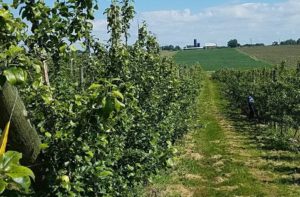
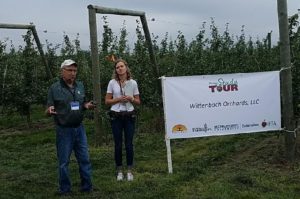
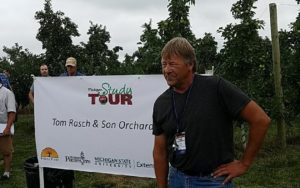
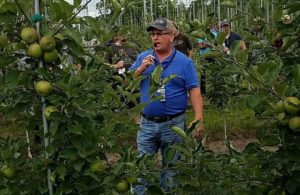
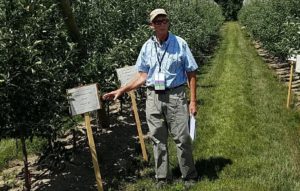
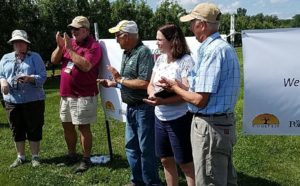
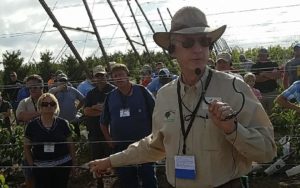
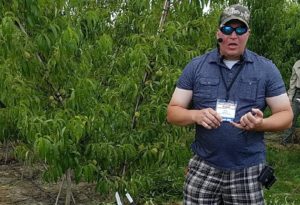
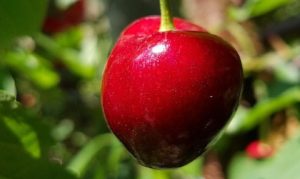
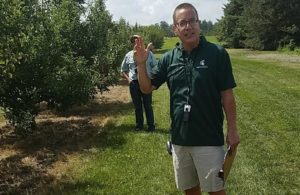
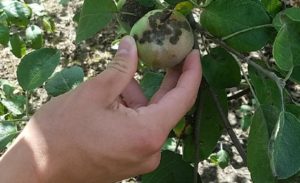
The mood was super-positive on the July 16-18 tour, despite the fact Michigan growers had sustained a nasty freeze May 8 that hit apple trees hard, leaving some of the fruit suitable for only processing. And some growers saw entire apricot crops completely wiped out that day.
But most attendees came away not with a vision of an industry that had sustained a blow, but one that was ascending – and how. Widespread adoption of high-density, intensely managed blocks designed to produce super-premium fruit were the order of the day. Super spindle, trellises, V-systems and upright fruiting offshoots (UFOs) – on peaches, of all things – were proudly displayed.
What follows is a virtual tour of some of this year’s highlights, which concluded with a visit to Michigan State University’s lovely campus in Lansing, MI, followed with a barbecue by the shore of Lake Michigan.
For more coverage, check out my Twitter feed highlighting #IFTAsummertour2017.
Subscribe Today For

David Eddy is the editor of Meister Media Worldwide's American Fruit Grower® magazine. See all author stories here.






